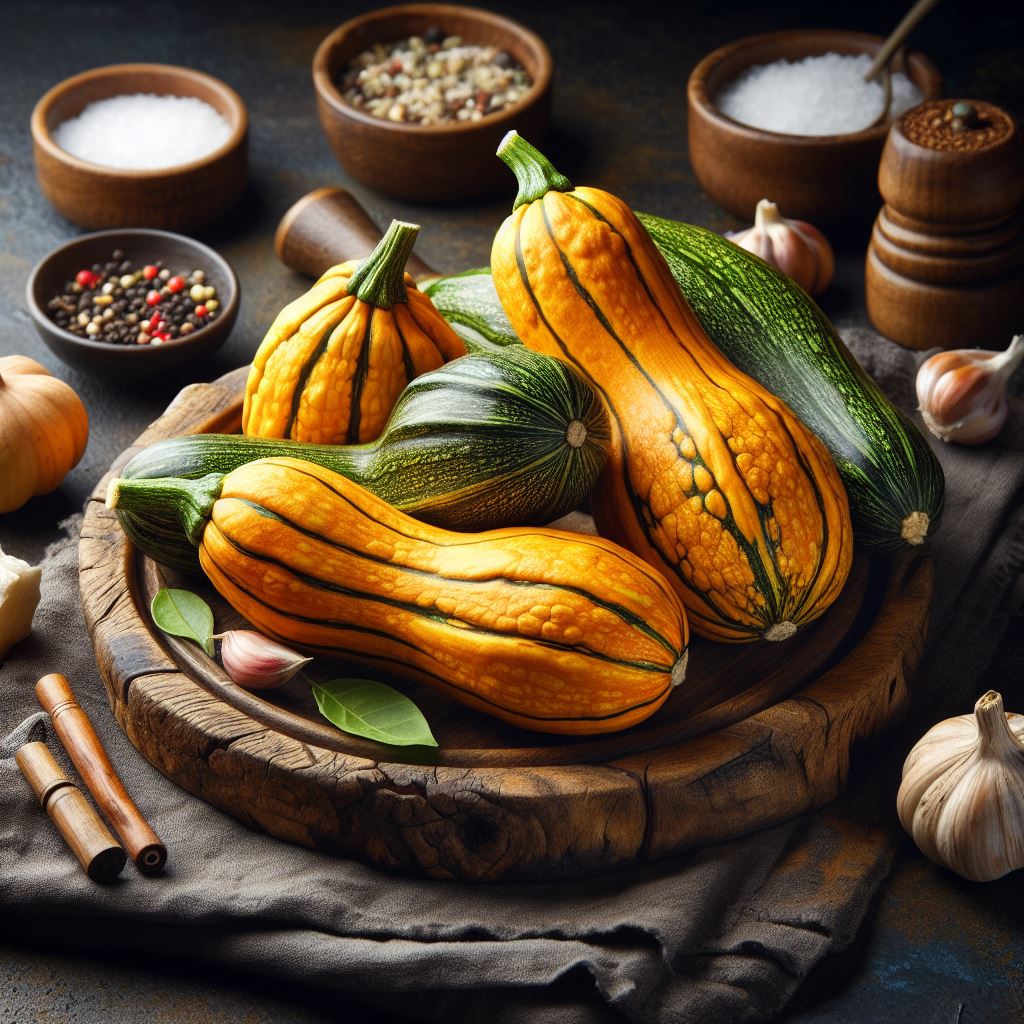When you think of squash, you may picture the traditional orange pumpkin or the popular butternut squash. But have you ever heard of calabaza? This versatile and nutritious squash is a staple in many Latin American and Caribbean cuisines, and it’s gaining popularity in other parts of the world. In this article, we’ll explore the wonders of calabaza and why you should add it to your diet.
What is Calabaza?

Calabaza, also known as West Indian pumpkin or tropical pumpkin, is a type of winter squash that is native to the Caribbean and Central America. It is a member of the Cucurbitaceae family, which includes other popular squashes like zucchini and acorn squash. Calabaza has a round or oblong shape and can range in color from pale yellow to dark green. Its flesh is a vibrant orange color and has a sweet, nutty flavor.
Types of Calabaza

There are several varieties of calabaza, each with its own unique characteristics. The most common types include:
- Calabaza Blanca: This variety has a pale yellow skin and a sweet, creamy flesh. It is often used in soup and stews.
- Calabaza Verde: This type has a dark green skin and a slightly nutty flavor. It is commonly used in Caribbean and Latin American dishes.
- Calabaza Anco: Also known as calabaza de Castilla, this variety has a smooth, light green skin and a sweet, creamy flesh. It is often used in desserts and bake goods.
- Calabaza de Chilacayote: This type has a pale green skin and a mild, slightly sweet flavor. It is commonly use in soup and stews.
Nutritional Benefits of Calabaza

Calabaza is not only tasty but also packed with essential nutrients. One cup of cooked calabaza, 245 grams contains:
- Calories: 49
- Carbohydrates: 12 grams
- Fiber: 2.7 grams
- Protein: 1 gram
- Fat: 0.2 grams
- Vitamin A: 170% of the recommended daily intake (RDI)
- Vitamin C: 20% of the RDI
- Potassium: 16% of the RDI
- Magnesium: 11% of the RDI
- Vitamin E: 10% of the RDI
- Vitamin B6: 9% of the RDI
- Folate: 8% of the RDI
Calabaza is also a good source of other essential vitamins and minerals, including calcium, iron, and zinc. Its high vitamin A content is particularly beneficial for eye health and immune function.
Health Benefits of Calabaza
In addition to its impressive nutrient profile, calabaza also offers several health benefits. Some of the potential benefits of incorporating calabazas into your diet include:
- Improved eye health: As mentioned, calabaza is rich in vitamin A, which is essential for maintaining healthy eyesight.
- Boosted immune system: The high levels of vitamin C in calabaza can help strengthen your immune system and protect against illness.
- Reduced inflammation: Calabaza contains antioxidants that can help reduce inflammation in the body, which may help prevent chronic diseases like heart disease and cancer.
- Healthy digestion: The fiber in calabazas can help promote healthy digestion and prevent constipation.
- Weight management: Calabazas is low in calories and high in fiber, making it a great addition to a weight loss or weight management diet.
How to Use Calabaza in Cooking
Calabaza is a versatile ingredient that can be used in a variety of dishes. Its sweet, nutty flavor pairs well with both savory and sweet flavors, making it a great addition to many recipes. Here are some ideas for incorporating calabazas into your cooking:
Soups and Stews
Calabaza is commonly used in soups and stews in Latin American and Caribbean cuisines. Its creamy texture and sweet flavor make it a perfect addition to hearty, comforting dishes. Try adding calabazas to your favorite chili or vegetable soup recipe for a delicious twist.
Baked Goods
Calabaza is also a popular ingredient in baked goods, particularly in Latin American desserts. Its sweet, creamy flesh adds moisture and flavor to cakes, breads, and muffins. You can also use calabazas puree as a substitute for pumpkin puree in your favorite pumpkin recipes.
Roasted or Grilled
For a simple and delicious side dish, try roasting or grilling calabaza. Simply cut the squash into cubes, toss with olive oil, salt, and pepper, and roast in the oven or grill until tender. You can add herbs and spice for extra flavor.
Pureed
Calabaza can be pureed and used as a base for soups, sauces, and dips. Its creamy texture makes it a great substitute for cream or butter in recipes, making it a healthier option.
Where to Buy Calabaza
If you’re interested in trying calabaza, you may be wondering where to find it. In the United States, calabazas can be found in most Latin American or Caribbean grocery stores. Some larger supermarkets may also carry it in the produce section. If you can’t find fresh calabazas, you can also purchase it canned or frozen.
How to Choose and Store Calabaza
When choosing calabaza, look for squash that is firm and heavy for its size. Avoid squash with soft spots or bruises. Calabazas can be stored at room temperature for up to a month, or in the refrigerator for up to three months. Once cut, wrap the remaining squash in plastic wrap and store in the refrigerator for up to five days.
Conclusion
Calabaza is a delicious and nutritious squash that is gaining popularity around the world. Its sweet, nutty flavor and versatility make it a great addition to a variety of dishes. Whether you use it in soups, baked goods, or as a side dish, calabazas is sure to become a staple in your kitchen. So next time you’re at the grocery store, be sure to pick up a calabazas and give it a try!
You may like reading about the following: Media Bzy
